Razer Blade Pro review: Power and performance in one pretty package
Razer tackles business and pleasure with this large, lithe laptop
The Razer Blade Pro is a large and slim laptop that does a good job at delivering for work and play. The components have ample power for most tasks, and the screen offers solid quality and great contrast. The MacBook is still our favourite, but the Blade Pro is a solid alternative if you’re after something more affordable and with a bigger screen.
-
+
Great design and build quality; Powerful, well-balanced components; Revised keyboard and trackpad work well; Good screen quality
-
-
Battery life is poor; Screen can’t quite match MacBook; Storage is slower than Apple

Business laptops never look this good, but the Razer Blade Pro is a unique machine. This machine is dark and svelte, with a 17.3in screen, and it's built to address the dual demands of work and play.
Razer has taken some bold decisions with its keyboard and trackpad on this machine, changing their positions to reflect how people use PCs - and it's packed the Blade Pro with powerful components, too.
Razer Blade Pro review: Design
There's no denying how attractive this machine is. The body is built from black machined aluminium, and it's finished with Razer's familiar green touches. The perfectly balanced lid eases open to reveal no unsightly logos - just a small, smart power button and Razer's interesting ergonomic choices.
The Blade Pro is a 17.3in machine, so it occupies plenty of space, but it's relatively slim and light compared to most other 17.3in machines - its body is just 23mm thin, and it weighs just over 3kg. Dell's larger Precision laptops are almost half a kilo heavier and about a centimetre wider, for instance, and HP's 17.3in ZBook systems weigh around 3kg but are 30mm thick.
The Razer's machined aluminium means build quality is exceptional - although we'd still use a sleeve to protect the metal from scuffs and scrapes.
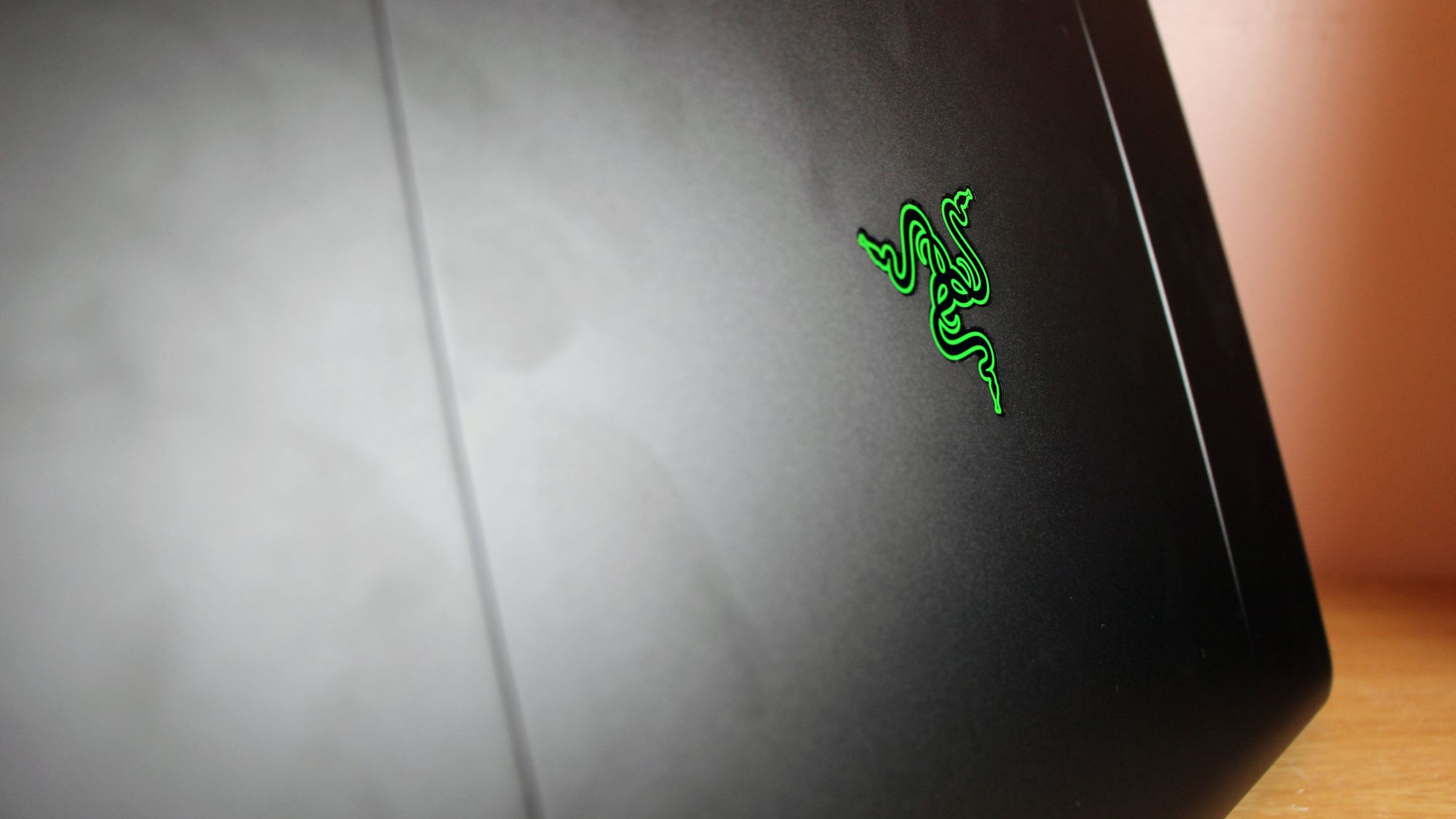
The aluminium brings to mind the MacBook Pro - which is a comparable business-class machine and a superb device in its own right - despite the Blade's larger screen. Both offer comparable design and strength, although the MacBook is slimmer and lighter.
The Razer serves up a HDMI and a Thunderbolt 3 port alongside three USB 3.1 Type-A connectors, a card reader and one audio jack. That's significantly more versatile than the Macbook, which only has Thunderbolt ports.
Razer Blade Pro review: Keyboard & Trackpad
We're used to laptops with a trackpad below the keyboard, but the Blade Pro goes in a different direction - horizontally.
The keyboard still occupies most of the Blade's width, but the trackpad sits on the right-hand side. It's a large pad ringed with RGB LED illumination, and a scroll-wheel above is flanked by media buttons.
At first, it's undeniably strange. We kept dragging our fingers to the more traditional trackpad location below the keyboard, and the keyboard itself is shifted to the left - so we kept missing those buttons, too.
Spend time with the Blade, though, and the layout becomes familiar. The trackpad's position mirrors how most people use a mouse at a desk. The pad is also larger than most trackpads, and the presence of a scroll-wheel makes it easier to work, too.
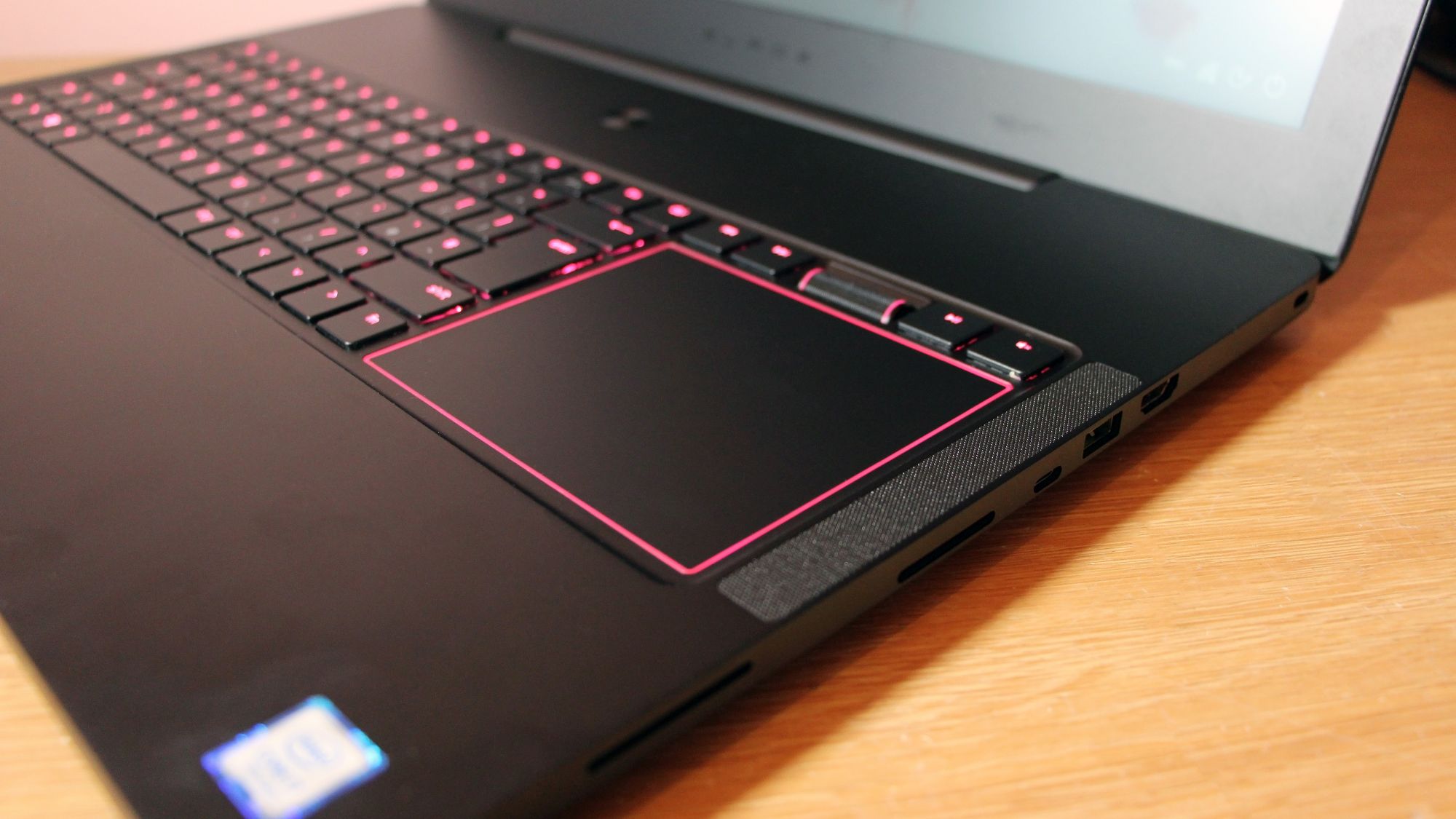
The keyboard's buttons are still large enough for rapid typing. They have impressive speed, a solid base and enough travel - all attributes that make the Blade's keyboard a boon for productivity.
It's certainly different from the latest MacBook keyboard, which has hardly any travel and requires a light touch. If you want a more traditional feel beneath the finger for hammering out long documents, then the Razer's unit will deliver more satisfaction.
Razer Blade Pro review: Display
The Full HD screen is an IPS panel with a matte finish. It's got a 120Hz refresh rate which can be used to deliver smoother scrolling and slicker UX navigation.
The screen delivered solid benchmarks in most tests. Its brightness measurement of 372cd/m2 is good, and that's paired with a black level of 0.24cd/m2 - a good result that creates dark areas that look suitably inky and distinct.
The Razer's contrast ratio of 1,550:1 is fantastic. Images pop off the panel, and there's plenty of vibrancy at every part of the scale. It's easy to pick apart subtly different shades, too.
The screen's colour temperature of 6,763K is good, and the screen's Gamma measurement of 2.12 is fine.
The Razer's panel only faltered in a couple of areas. Its average Delta E of 4.7 is just that - average - while it could only display 86.2% of the sRGB colour gamut.
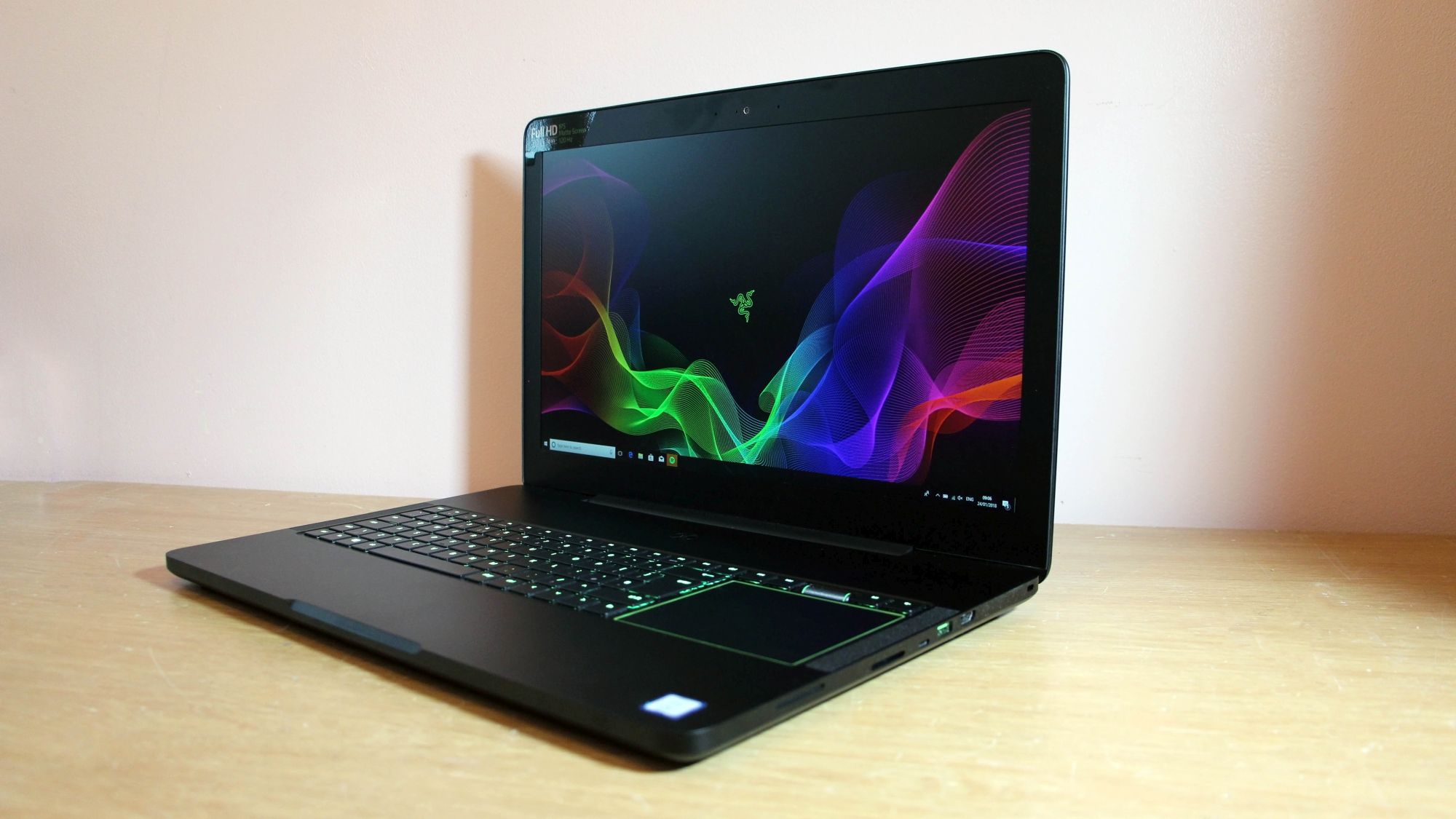
Those issues mean the Razer isn't quite up to the most sensitive photo and design tasks, but it'll handle almost all work applications - including most photo and video editing - with ease.
It's undoubtedly a good display, but the latest MacBook Pro goes one better. The 15in model has a 2,880 x 1,800 resolution that offers more sharpness than the Blade Pro. It also has better colours and a better bright point, and it's arguably more useful for professional users as it adheres to the DCI-P3 colour gamut.
Razer Blade Pro review: Hardware & Performance
The stellar design and good screen are paired with familiar, capable components. The Core i7-7700HQ is now a last-generation processor, but it remains powerful: it's got four Hyper-Threaded cores, and its 2.8GHz stock speed reaches 3.8GHz with Turbo boost. It's paired with 16GB of DDR4 memory, a Samsung SSD and a 2TB hard disk.
The Core i7 chip delivered a blazing score of 126 in our benchmarks, with consistent results across image editing and multi-tasking - proof that this chip is adept with single-threaded software and multi-threaded tools. It's well ahead of every other laptop we've tested in terms of performance.
The Razer's Geekbench single- and multi-core results of 4,147 and 13,269 further bolster its work credentials. The only way you're getting much more CPU performance from a laptop is by using a machine with an overclocked or a desktop processor - and those rigs are more expensive and much heavier than the Blade.
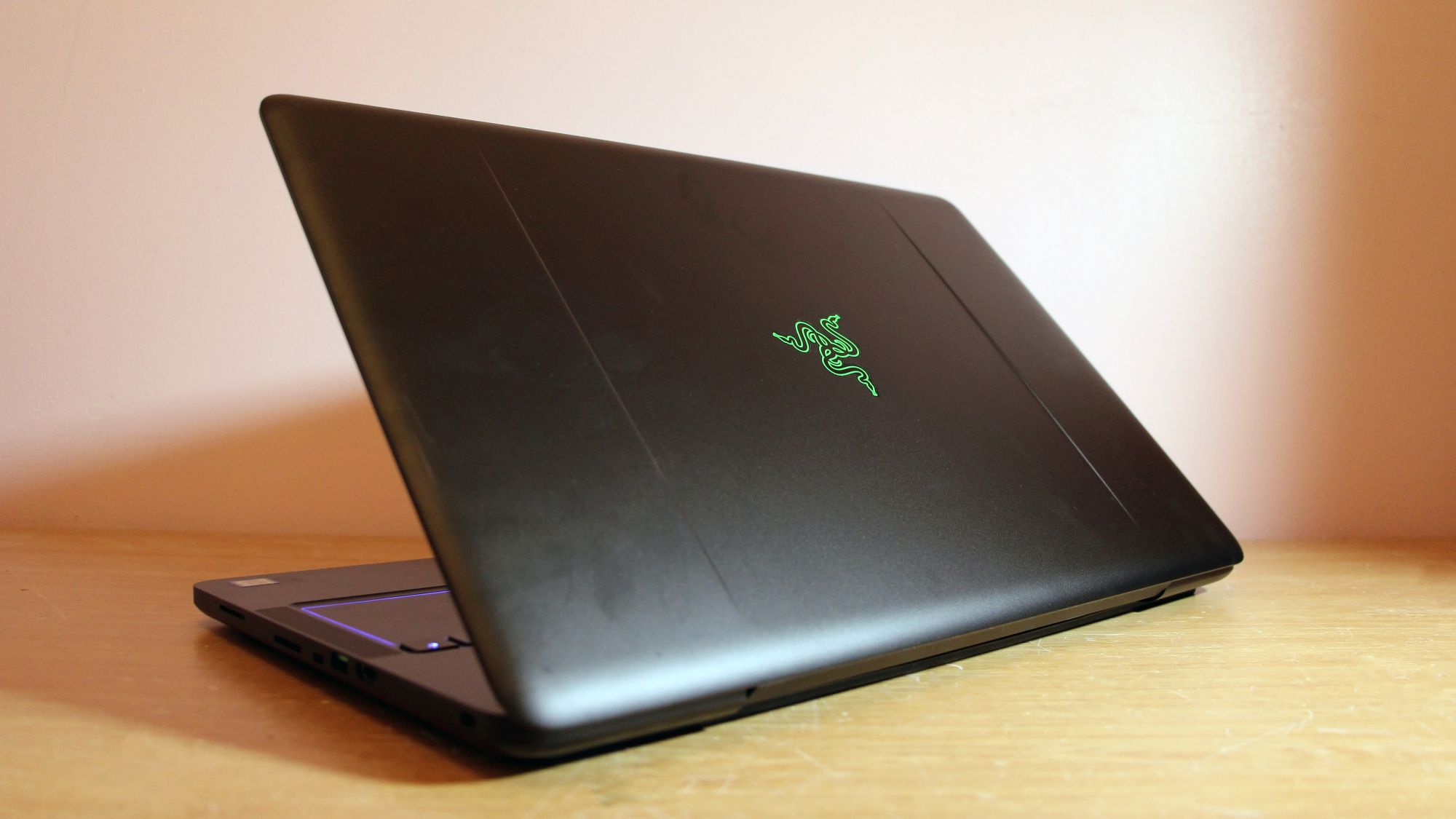
Take, for instance, the MacBook Pro. The more affordable of Apple's two 15in models still costs 2,349 and has the same i7-7700HQ as the Razer. If you pay 2,699 for the pricier machine you get an i7-7820HQ, but that chip is only 100MHz faster.
The Razer does fall a little behind in SSD speeds. Its results of 1,573MB/sec and 978MB/sec are good - but the Apple's PCIe storage is faster.
Graphical grunt comes from an Nvidia GeForce GTX 1060. It's a mid-range chipset that has enough power for graphically intensive work applications and after-hours gaming. Razer has deployed the version with 6GB of memory, rather than 3GB, which we're pleased about - but this chip doesn't have the professional certifications that you'll find on a Quadro or Radeon Pro part.
Nevertheless, it's potent. It blitzed through Dirt Showdown with an average of 102fps, and ran modern games like Witcher 3 and Deus Ex: Mankind Divided at 40fps and 38fps.
That doesn't just bode well for playing games - it means that this chip will handle photo and video work too, alongside other graphically intensive applications.
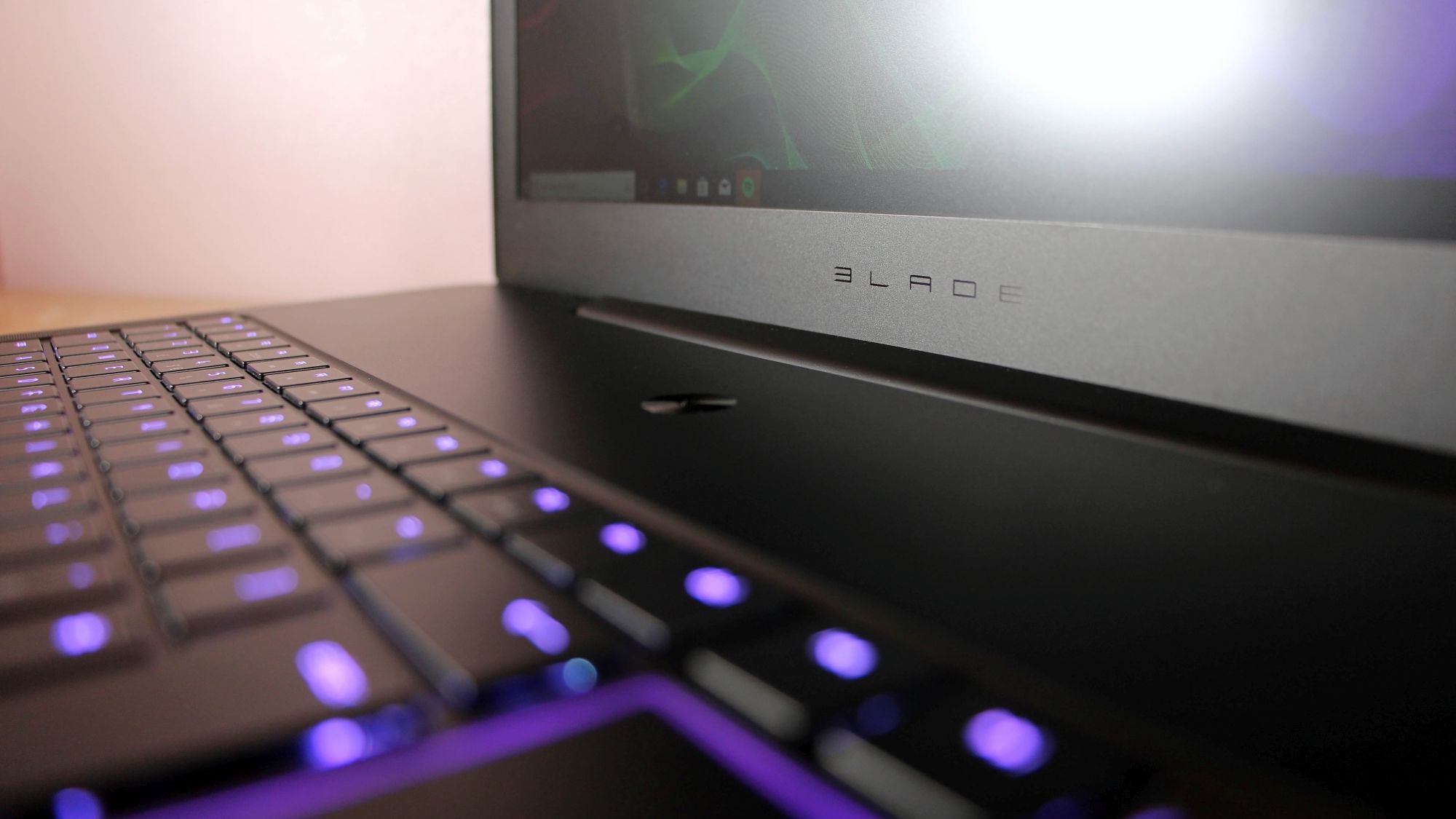
The GTX 1060 will also outpace the latest MacBook Pro in graphical benchmarks. The MacBook Pro 15 can be configured with an AMD Radeon Pro 560 with less memory and lower speeds than the Nvidia card.
The Blade performed well in thermal tests despite the slim construction and powerful components. It was silent when running less intensive tasks, and it was only a little louder when its CPU and GPU were subjected to a system-wide stress-test. It's quieter than many powerful laptops, and easy enough to drown out with a headset or speakers.
There weren't any temperature issues. The CPU's peak temperature of 92C is a little high, but not dangerous, and the GPU peaked at a fine 76C. The metal above the keyboard and on the rear of the base panel got a little warm, but it was never uncomfortably hot - and that's not a problem if this machine will be used on a desk.
The battery, though, is more akin to gaming laptops. The Razer lasted for just short of three hours in our video test - not even half as long as the latest MacBooks. You won't even get half a day away from the mains with this machine, which will prove restrictive in a business environment - long meetings may not be possible without plugging in, for example. It's definitely a machine designed to be stuck on a desk and left in place.
Razer Blade Pro review: Verdict
This isn't a hard-nosed work machine, but the Blade Pro remains an excellent laptop that has the performance and quality to handle most work tasks.
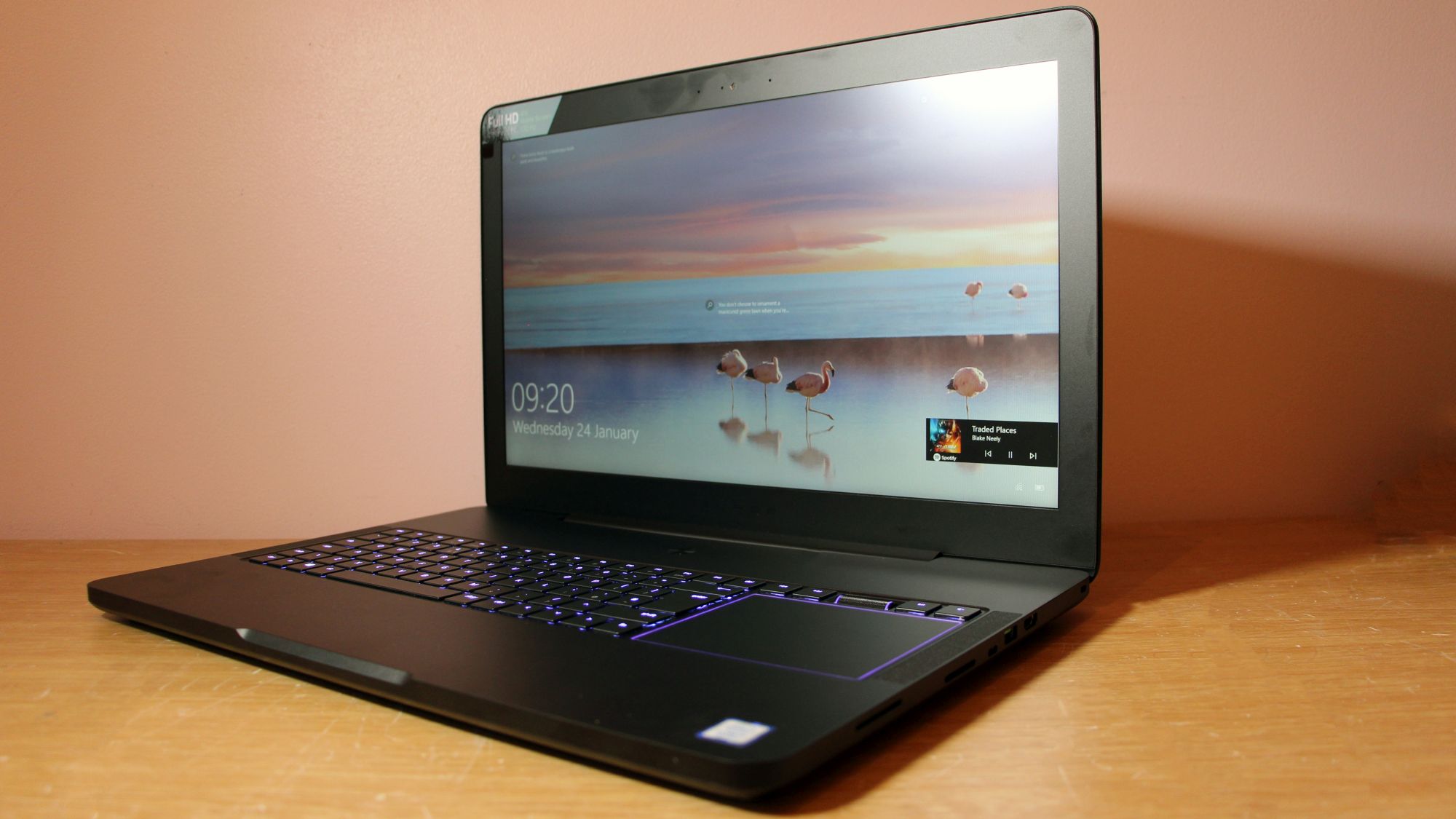
The Core i7 processor and GTX 1060 graphics have ample power, and the SSD, memory and storage are all fine. The screen is good, the keyboard is consistent, and the revised trackpad position works well. It undoubtedly looks the part, with its dark metal and slim build.
While the Blade Pro is good, though, the MacBook Pro is still better in some departments. It has a superior screen, faster storage and better battery life. You may also prefer its keyboard. Of course, the MacBook does lose ground with its smaller size, poorer GPU and lack of port versatility.
The more expensive MacBook remains one of the best laptops we've ever used. But if you want a larger alternative with more graphical grunt and a lower price - and if you don't mind blurring the lines between business and gaming - the Razer Blade Pro is a stellar alternative.
Verdict
The Razer Blade Pro is a large and slim laptop that does a good job at delivering for work and play. The components have ample power for most tasks, and the screen offers solid quality and great contrast. The MacBook is still our favourite, but the Blade Pro is a solid alternative if you’re after something more affordable and with a bigger screen.
| Processor | 2.8GHz Intel Core i7-7700HQ |
| RAM | 16GB 2,400MHz DDR4 |
| Graphics | Nvidia GeForce GTX 1060 6GB |
| Storage | 256GB Samsung PM951 SSD, 2TB hard disk |
| Display | 17.3in 1,920 x 1,080 120Hz IPS |
| Operating system | Windows 10 Home 64-bit |
| Optical | N/A |
| Connectivity | Gigabit Ethernet, dual-band 802.11ac, Bluetooth 4.1 |
| Ports | 3 x USB 3, 1 x Thunderbolt, 1 x HDMI, 1 x Gigabit Ethernet, 1 x SDXC, 1 x audio |
| Dimensions | 424 x 281 x 23mm |
| Weight | 3.07kg |
| Warranty | 1yr |
Get the ITPro daily newsletter
Sign up today and you will receive a free copy of our Future Focus 2025 report - the leading guidance on AI, cybersecurity and other IT challenges as per 700+ senior executives
Mike Jennings has worked as a technology journalist for more than a decade and has been fascinated by computers since childhood, when he spent far too long building terrible websites. He loves desktop PCs, components, laptops and anything to do with the latest hardware.
Mike worked as a staff writer at PC Pro magazine in London for seven years, and during that time wrote for a variety of other tech titles, including Custom PC, Micro Mart and Computer Shopper. Since 2013, he’s been a freelance tech writer, and writes regularly for titles like Wired, TechRadar, Stuff, TechSpot, IT Pro, TrustedReviews and TechAdvisor. He still loves tech and covers everything from the latest business hardware and software to high-end gaming gear, and you’ll find him on plenty of sites writing reviews, features and guides on a vast range of topics.
You can email Mike at mike@mike-jennings.net, or find him on Twitter at @mikejjennings
-
 Cleo attack victim list grows as Hertz confirms customer data stolen – and security experts say it won't be the last
Cleo attack victim list grows as Hertz confirms customer data stolen – and security experts say it won't be the lastNews Hertz has confirmed it suffered a data breach as a result of the Cleo zero-day vulnerability in late 2024, with the car rental giant warning that customer data was stolen.
By Ross Kelly Published
-
 Women show more team spirit when it comes to cybersecurity, yet they're still missing out on opportunities
Women show more team spirit when it comes to cybersecurity, yet they're still missing out on opportunitiesNews While they're more likely to believe that responsibility should be shared, women are less likely to get the necessary training
By Emma Woollacott Published
-
 OpenAI wants developers using its new GPT-4.1 models – but how do they compare to Claude and Gemini on coding tasks?
OpenAI wants developers using its new GPT-4.1 models – but how do they compare to Claude and Gemini on coding tasks?News OpenAI says its GPT-4.1 model family offers sizable improvements for coding, but tests show competitors still outperform it in key areas.
By Ross Kelly Published